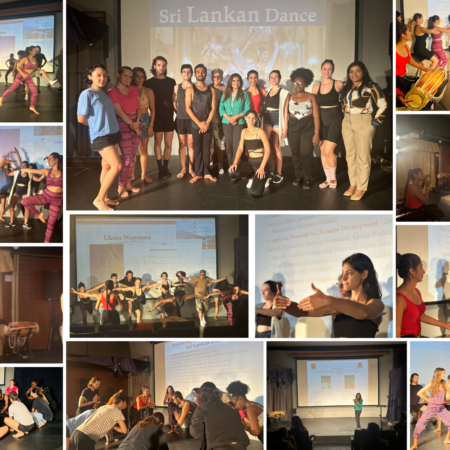Hugh Thomson takes a break from the beach to join Buddhist pilgrims on a night-time ascent of the country’s holiest mountain
High quality global journalism requires investment. Please share this article with others using the link below, do not cut & paste the article. See our Ts&Cs and Copyright Policy for more detail. Email ftsales.support@ft.com to buy additional rights.
I arrived in Kandy, capital of Sri Lanka’s hill country, as the busy streets were beginning to empty, the chaos of the day giving way to the calm of dusk. Kandy is a temple town built by an artificial lake, and the smell of lotus flowers being prepared for the evening puja carried across the water, accompanied by amplified Buddhist chanting from megaphones placed along the walkways.
As befits a holy city, Kandy is largely teetotal, particularly close to the Buddhist shrine. But in the more secular area is one of the very few drinking spots, the Royal Bar & Hotel, where I installed myself in the shady bar, surrounded by customers drinking coconut arrack. I felt Hermann Hesse would approve of a little drinking before I embarked on the more spiritual quest for which I had come to this part of the hill country. He arrived in Kandy a century ago in 1911, right at the beginning of his own long journey to the east that later resulted in his classic account of the Buddha’s life, Siddhartha.
Hesse always believed that you needed to experience worldly pleasures before you could appreciate the austerity of a spiritual retreat. His heroes Narcissus and Goldmund wrestle with this contradiction, as does the Buddha himself in Siddhartha. So Hesse partook of wine and opium in Kandy and was in the middle of a delirium of dysentery and decadence when he set off to cleanse his thoughts and climb a mountain.
It was his account of seeing “deep blue and immense, the entire high mountain system of Ceylon piled up in mighty walls, and in its midst the beautiful, ancient and holy pyramid of Adam’s Peak” (Aus Indien, 1913), that had made me want to climb that sacred summit, with its Buddhist temple on the very top, 2,243 metres above sea level. The peak is also known as Sri Pada — “the Lord’s foot” — a reference to a depression in the rock near the summit, which is traditionally thought to be the footprint of Buddha, Shiva or Adam, depending on whether you are Buddhist, Hindu or Christian. At one point there was a suggestion that the mountain’s silhouette should be included in the national flag of this island of so many faiths.
My driver, Mr Rajakaruna — “just call me Frank” — got lost a few times on the twisty mountain roads from Kandy. At one point he slammed on the brakes with a shout when a sambar deer bounded across just in front of us. The Sri Lankan sambar weighs in at some 280kg, so is not something you want through your windscreen. After 30 years in his taxi this was Frank’s closest encounter with one and left him a shaken and much slower driver.
So it was past 10pm when we finally drove up to the small community of Dalhousie, from which most walkers attempt the climb of Adam’s Peak. I could see the lights of the pilgrims’ trail heading up the mountain above us, like a ski run at night. After an unappetising meal of cold dhal and leftover rice I managed a few hours of what passed for sleep. The hostel was a simple climbers’ one and there was a plank missing from my bed, which didn’t help; nor did the devotional music being played outside.
Getting up at 2am to begin the climb had the disturbing clarity of a dream. The night sky was clear and I could see the southern constellations. Flags and banners lined the pilgrims’ path, and while I was advised to bring a head-torch, it was hardly necessary as the way up was so illuminated by tea stalls and shrines; nor did I need the proffered services of a guide.
The night-time temperature was cool and calm and delightful. I could set off wearing just a shirt and leave the sound of the river running through Dalhousie behind as I started to climb. From Dalhousie, the altitude that had to be gained was not so great: no more than 1,000 metres. However, the path had been laid with steps for the pilgrims. While that might sound comfortable, getting up — and worse, down — more than 5,000 steps was murder for the calves and thighs. A great many parties were already hobbling down in pain, not a sight that inspired confidence.
Some pilgrims were making the ascent in bare feet, as an act of penance. Whole Sri Lankan families were making the journey together, young sons and daughters often supporting their more elderly relatives. A few local dogs had got used to accompanying pilgrims up the mountain for their nightly constitutional, and a cheerful canine crowd was setting off alongside the human one.
At the start of the trail was a noticeboard that, alongside the usual prohibitions of any national park, asked that all guns be left behind. The people of Sri Lanka are still recovering from the long civil war that raged, intermittently, between 1983 and 2009.
The pilgrimage has long historical provenance. Marco Polo mentions it, while the great Arab traveller of the 14th century, Ibn Battuta, ascended by one side and descended the other. He described Adam’s Peak as a mountain “that goes up in the air like a pillar of smoke”.
It was certainly one of those experiences that felt both timeless and numinous — a rewarding contrast to the beaches, luxury hotels and tea plantation tours that have pushed Sri Lanka on to countless magazine lists of hot destinations to visit this year. The walkers thinned out during the ascent and for much of the way I was on my own with just the stars above and the call of the tree frogs and cicadas for company.
About halfway up the mountain, the path got narrower and steeper. I stopped for a cup of milky white chai with plenty of sugar. The stall owner told me that by travelling up on a Sunday, I had missed the crowds. The Friday and Saturday nights had seen five times as many pilgrims, he said, which had made for a crowded and slow ascent, particularly at the top.
I timed my climb with more strategically placed chai stops to arrive on the summit just as the sun was about to come up. So too did the mist and fog, and the assembled pilgrims were unable to see the famous triangular shadow that the peak casts to the west on a clear day. But the sun coming out through the mist had its own peculiar beauty, with a triple halo caused by the diffused light.
The view across the lakes to the Horton Plains and beyond to the heartland of the Sri Lankan hill country was spectacular. It was easy to see why so many religions had added the peak to their origin myths. The landscape looked as if it had been minted yesterday, with that green freshness in which Sri Lanka excels.
Beside me, one pilgrim said he had now made the journey 15 times, so had the right to ring the bell at the top that number of times. He also told me this was the most beautiful sunrise he could remember seeing from the peak. Around us were many excited faces of the other walkers who had made the long night’s journey up into the day.
After a puja ceremony, the pilgrims queued to enter the small shrine built around the great footprint. As a symbol, it hints at the antiquity of the site, as Buddhism in its earliest days was aniconic and so he was celebrated more by his absence than presence. I left my own small offering of thanks beside the shrine, before beginning a descent that compounded the damage done to both calves and thighs. But ahead lay a week of recuperation on the beaches of Galle.
“Ah, yes,” said the masseur who gave me a £10 full-body workout with the sound of the ocean coming through the thin walls of the beach-shack. “From the tension in your shoulders and neck, I can guess that you spend too much time writing at a keyboard. And from the way your legs have seized up, I can tell you have just climbed Adam’s Peak.”
Hugh Thomson is the author of seven travel books, most recently the ‘The Green Road into the Trees’ (Windmill), which won the 2014 Wainwright Prize
http://www.ft.com






















